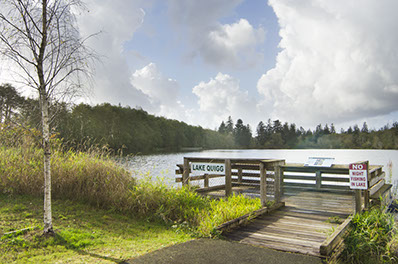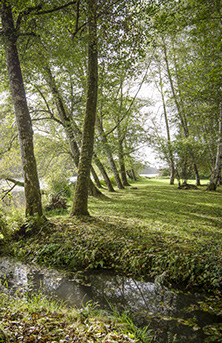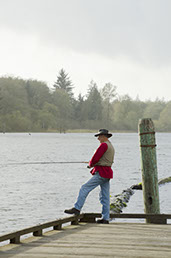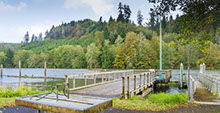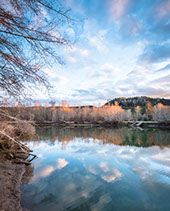Friends Landing History
When David Hamilton, a Trout Unlimited board member, wanted to help a close friend who was having a difficult time accepting life in a wheelchair, he thought about what he could do to help. He began making plans for a recreational facility that people with disabilities could enjoy; where they could access aqua-culture and fish enhancement projects in the beauty of northwest Washington State. He set about to make his dream happen, complete with a campground wedged between a river and a lake for the disabled community.
Lake Quigg
The Friend family donated 152 acres, previously an old gravel pit with one-mile of Chehalis River frontage, to Trout Unlimited in 1988. Dredging for gravel had produced a 32-acre, man made lake, Lake Quigg, with a variety of fish.
After Hamilton presented the plan to use this property to build a park for the disabled community, Trout Unlimited agreed to support the project. Hamilton planted the seed and got the wheels turning; Trout Unlimited, along with Columbia Pacific RC&D and Grays Harbor County funded the project and provided volunteers.
Building Fishing Piers, Boat Launch and Shelters
The community came together in three phases. First the volunteers built a fishing pier on the Chehalis River with a boat launch, two fishing shelters, a picnic shelter, a parking lot and quarters for a caretaker. Then they built a paved path south of the lake along with viewing docks and piers. They erected a ramp and float on the river, along with a boat launch, an extended parking lot and landscaping.
Lake Trail and Camping
In 1999 the final phase was completed with a paved pathway circling the lake, restrooms with showers, recreational vehicle and tent-camping facilities, paving and accessible playground equipment.
Friends Landing, once a dream, was now a reality.
The Port of Grays Harbor
In 2014, the stewards of these vital waterfront facilities chose the Port of Grays Harbor to take over the long-term management and preservation of Friends Landing. The Port’s mission of providing public access to our waterfront and promoting tourism for the betterment of the region was a perfect fit to manage these beautiful waterfront assets.
